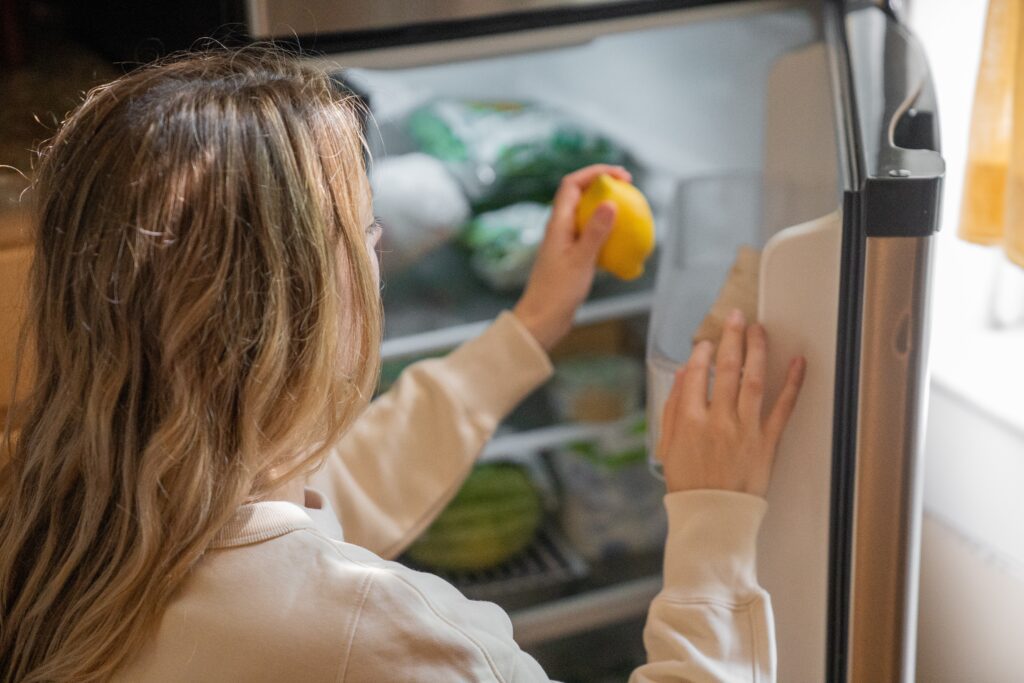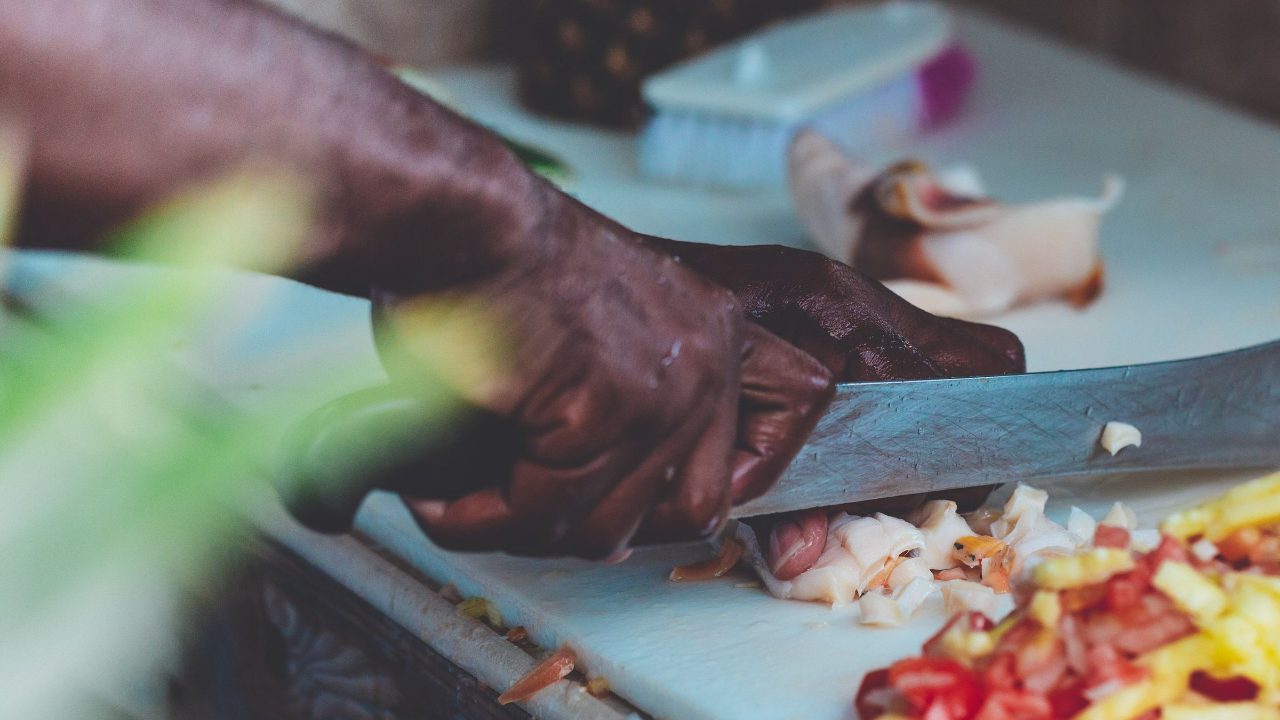Let’s consider a common scenario in a bustling kitchen: a chef dedicated to crafting a delicious dish slicing fresh ingredients on a cutting board fails to notice that the same board had previously been used for raw food, such as meat or fish, which are particularly prone to contamination. Alarmingly, the board hasn’t been properly sanitized between uses, creating a prime environment for germs and bacteria to transfer between foods. This scenario highlights a significant risk in food handling: cross-contamination.
Cross-contamination occurs when pathogenic microorganisms, which can lead to foodborne illnesses, are transferred from one contaminated food or surface to another, often due to inadequate hygiene practices. It can arise in various ways, particularly through kitchen utensils—like knives, cutting boards, and containers—that haven’t been thoroughly cleaned after handling raw ingredients.
Moreover, the transfer of contaminants is not exclusive to utensils; it can also happen through improper food handling by staff, such as neglecting to wash their hands after dealing with raw foods or touching contaminated surfaces before preparing ready-to-eat items. This negligence can pose serious health risks to consumers.
To effectively understand cross-contamination, it’s useful to recognize its main forms. These can be classified into three primary categories: direct contamination, where a contaminant moves from one food to another; indirect contamination, involving contact between contaminated utensils and clean food; and surface contamination, where bacteria or viruses from countertops are transferred to food. Consequently, awareness of cross-contamination risks is paramount, along with implementing stringent food safety protocols in the kitchen.
Adopting a few straightforward yet effective practices can significantly reduce the risk of cross-contamination. These include using separate cutting boards for raw and ready-to-eat foods, routinely sanitizing utensils and surfaces, and frequently washing hands during food preparation. Understanding cross-contamination and its prevention is essential for safe food preparation and consumer health. Simple hygiene measures can greatly enhance the quality and safety of the meals served.
Our minds are like our stomaches; they are whetted by the change of their food, and variety supplies both with fresh appetite.
-Quintiliano
Jump To Section
Cross-Contamination
You can also watch this and other exclusive GA Originals on YouTube.
Microbiological contamination involves the introduction of harmful microorganisms into foods that are otherwise free from them. This poses a significant food safety threat, particularly with items like raw poultry, which may already host pathogenic bacteria such as Salmonella. This bacterium is known to cause severe illnesses in humans, thereby representing a substantial public health danger.
One important factor to consider is cross-contamination, a process where pathogens are transferred from raw foods, like chicken, to those ready to eat or yet to be cooked. This transfer can happen in several ways, including through kitchen utensils, preparation surfaces, or even via the hands of food handlers. To prevent such contamination—often invisible to the naked eye but capable of causing serious health issues when ingested—strict hygiene and food safety practices are vital.
In addition to bacteria, other pathogens such as viruses can contaminate food. A notable example is hepatitis A, which can spread through improper handling of ingredients by an infected individual. If food comes in contact with surfaces or utensils contaminated with this virus, it risks becoming unsafe, even if the original ingredients are safe to consume.
Contamination is not exclusive to microorganisms. Chemicals can also inadvertently enter food supplies, such as when a cleaning product is spilled on a kitchen counter and not properly cleaned up, leading to tainted food preparation. Such chemical contamination can pose significant health risks, resulting in allergic reactions and toxicity.
It is essential to recognize the various types of contamination—microbiological, viral, and chemical—and to enforce stringent preventative measures throughout the food handling process, from storage to preparation. Implementing good hygiene practices, utilizing separate utensils for raw and cooked items, and ensuring clean surfaces are crucial steps to minimize contamination risks and safeguard public health.
How Does Cross-Contamination Happen?

Cross-contamination is a significant issue that can undermine food safety in various ways. One primary method of contamination occurs when raw food or its juices come into contact with food that is ready to eat. This can happen directly, such as when the juices from raw meat drip onto salads or other pre-prepared dishes, or indirectly, through contaminated utensils or surfaces that have not been properly cleaned after handling raw food.
Another crucial factor in cross-contamination is the improper use of equipment and utensils. Frequently, the same tools—like knives, cutting boards, and pans—are employed for both raw and cooked or prepared foods. Without meticulous cleaning and sanitization between uses, harmful microorganisms from raw food can easily transfer to ready-to-eat items, significantly increasing the risk of foodborne illnesses.
Additionally, cross-contamination can arise through the hands of individuals preparing food. If hands touch raw items, such as meat or eggs, and subsequently handle ready-to-eat food without adequate washing, pathogens from the raw products can be transferred, endangering consumer health. This failure to properly wash hands between tasks is one of the most pervasive causes of cross-contamination in kitchens, whether professional or home-based.
To combat this risk, it is essential to implement safe food handling practices that ensure all surfaces, utensils, and hands are thoroughly cleaned and disinfected. By taking these precautions, we can effectively prevent cross-contamination and safeguard the health of consumers.
Avoiding Cross-Contamination

Cross-contamination poses a significant threat to food safety and consumer health. To guarantee that food is prepared safely and hygienically, it is vital to adhere to practical and effective guidelines.
Proper Food Refrigeration
Food storage in the refrigerator plays a crucial role in preventing cross-contamination. Raw meat, poultry, and seafood should always be placed on the lower shelves to prevent their drippings from contaminating other items, such as fruits and vegetables, that are consumed raw. Cooked and ready-to-eat foods belong on the upper shelves, away from potential contaminants. Additionally, raw fruits and vegetables, along with items that will be reheated, should be stored on the middle shelves. All foods should be adequately covered to prevent splashes or liquids from other products from causing cross-contamination.
Safe Practices in Food Handling
Before beginning any cooking activity, thoroughly washing hands is essential to prevent contamination. It is also crucial to wash hands before and after each task, particularly after using the restroom. In commercial settings, such as buffets or self-service restaurants, previously displayed food should never be mixed with new items, as this avoids the risk of older food contaminants affecting fresh food. Moreover, wearing “saliva protectors” while handling food acts as a barrier between the handler’s face and exposed items. Additionally, it’s important to store cleaning supplies and chemicals separately from food products to minimize the risk of accidental contamination.
Correct Use of Equipment and Utensils
Proper handling of kitchen equipment and utensils is key to preventing cross-contamination. Cutlery, such as cutting boards and knives, should be designated for specific uses, with separate utensils for raw meat and other foods. After use, they must be thoroughly washed and sanitized before reuse. Many restaurants employ a color-coding system for cutting boards and knives, such as yellow for poultry, blue for fish, and red for meat. It’s worth noting that while wooden cutting boards are popular, they often have microscopic cracks that can harbor bacteria, complicating effective sanitation. It is also advisable to use disposable spoons for tasting dishes instead of fingers, as this can introduce germs into the food.
By diligently following these guidelines, you will not only ensure food safety but also protect the health of both consumers and food handlers.
Bottom Line
Every chef must possess the skills to identify and mitigate potential cross-contamination risks during food preparation and handling. Contamination can arise from various factors, such as using improper utensils, failing to sanitize surfaces adequately, or carelessly managing raw and cooked foods together.
By implementing effective and stringent practices to prevent cross-contamination, chefs play an essential role in ensuring food safety. Key measures include separating ingredients, regularly sanitizing hands, and utensils, and being mindful of optimal storage and cooking temperatures.
These practices greatly reduce the risk of foodborne illness, safeguarding consumers’ health and bolstering the establishment’s reputation by underscoring a commitment to food quality and safety. Consequently, all kitchen professionals need to adhere to these guidelines to maintain a safe and healthy working environment.
Did you like this article?
I hope this article has helped you understand how cross-contamination works. To learn more, take a look at, Is It Safe To Wash Meat Before Cooking?
Leave a comment below and share our content. Help our community grow by following our social media on Spotify, Instagram, Facebook, YouTube, and TikTok. And stay up to date with the news from the world of Gastronomy.
Don’t forget to tag @gastrovinoacademy on Instagram and hashtag it #gastrovinoacademy.
Cheers 🍷


